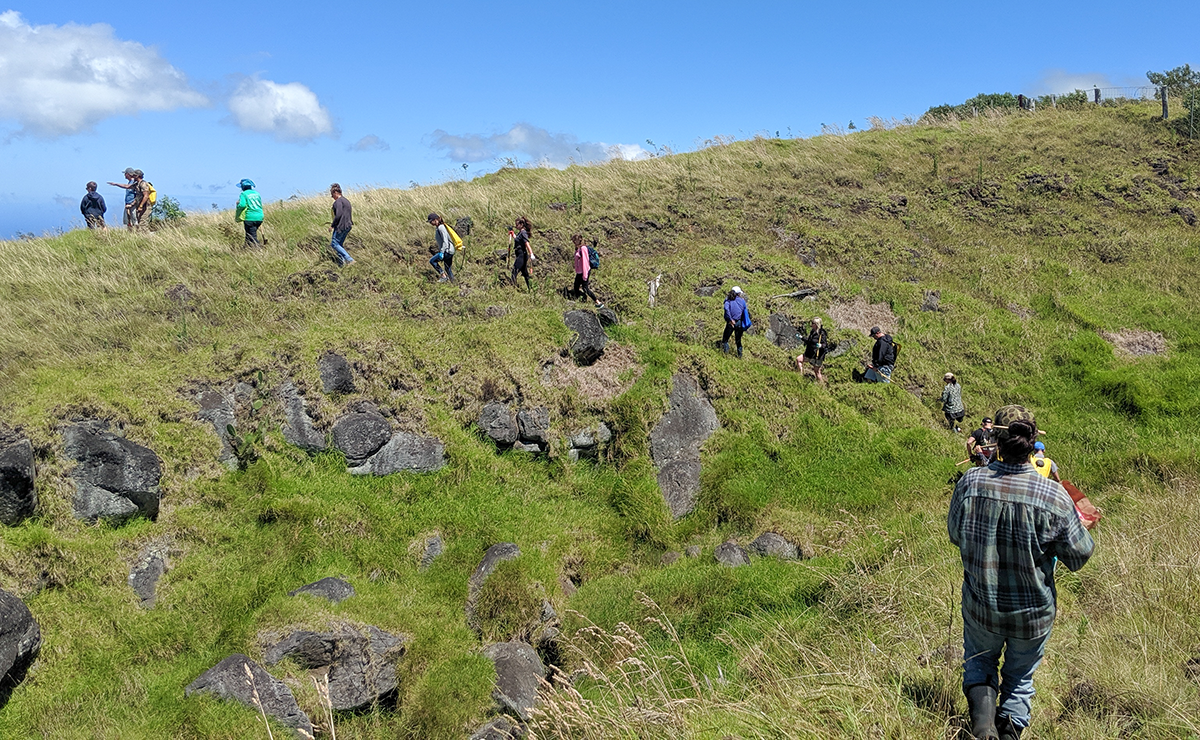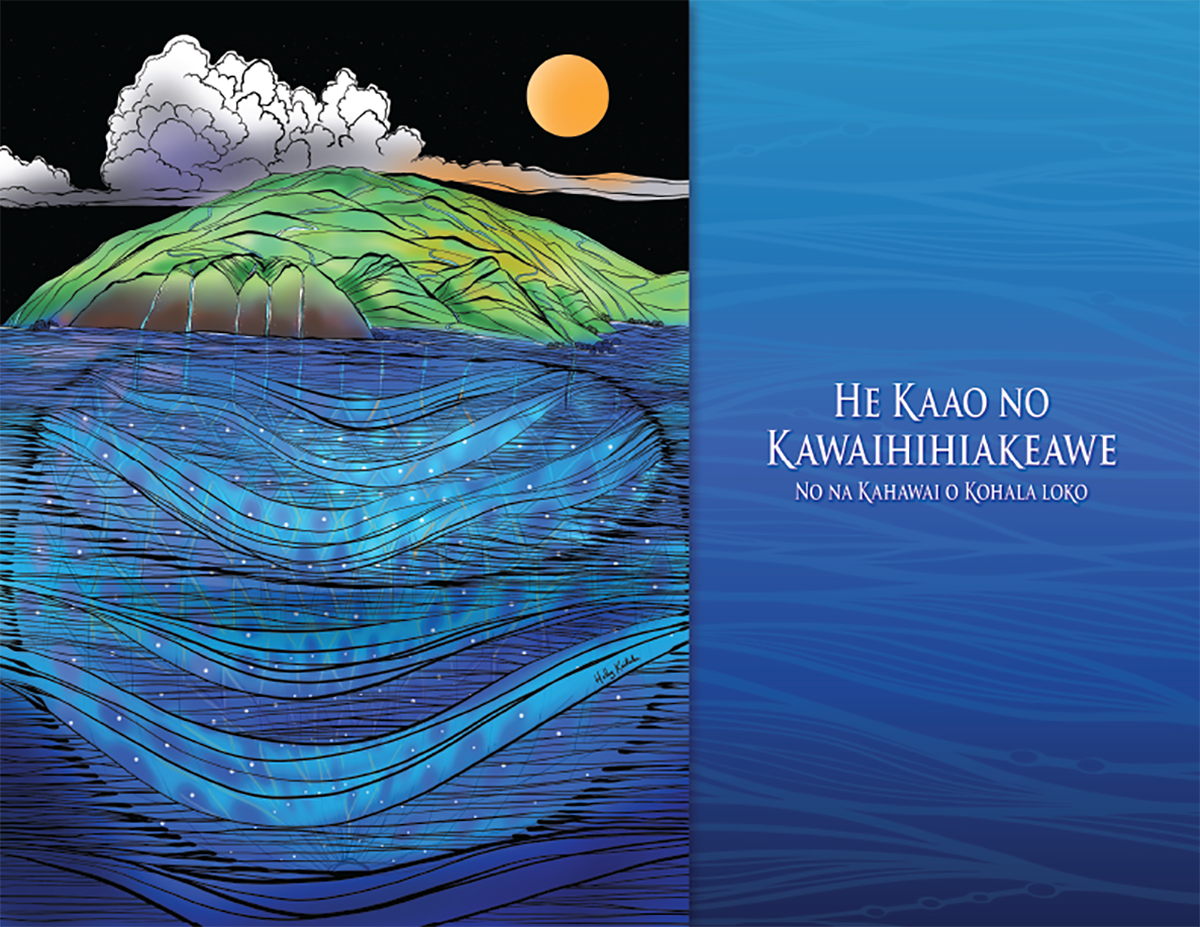Water is always on an adventure. We are not often included. Wai (fresh water) enters where man cannot or should not. He Kaao no Kawaihihiakeawe gives us that rare chance to join with our natural elements and environmental kin, beginning and ending in Kohala.
So begins our introduction to the journey of Kawaihihiakeawe and wai from Kohala…
As shared by Luka Kanakaole, a kaʻao can be described as a tale, legend, novel, usually a fanciful tale. To twist or to continue beyond their known and unknown futures. This is the purpose of kaʻao. These stories were born from intimate and intense observations of the natural environment and the changes it goes through. The function that kaʻao serve is to preserve scientific observational data through compelling stories that can transcend time and generation.
In 2015, The Kohala Center embarked on a journey to document and share knowledge about the sources of water and life in Kohala through rich photography. Our goals were to inspire appreciation of native Hawaiian forests, educate the public about forests as sources of water and life on our island, and protect our watersheds, native species, and ecosystem processes. As the project progressed, it evolved into a ka‘ao, composed in today’s time to reflect a current state of being between us and our environment. He Kaao no Kawaihihiakeawe is enlivened with images of some of Kohala’s most remote and sacred places by local photographers Andrew Richard Hara, Jack Jeffrey, and Nate Yuen, and visual interpretations by Pa‘auilo-based illustrator Haley Kailiehu.
The process of co-creating and publishing this book welcomed a collaboration between visual storytellers, cultural practitioners, conservationists, and landowners. Our journey took us throughout Kohala Mountain and down to the sea, visiting with Pu‘u Pili, Laupāhoehoe Nui, Pu‘u o Umi, Waiakamali‘i Stream, Keawewai, Pu‘ukawaiwai, and Pelekāne and Honokoa Bays. The more we learned about the loss of much of our native species and habitats, the more we were inspired by what we still had left.
Many people do not know the source of their water. Our hope is that this ka‘ao gives readers a chance to “visit” with the forests and our many environmental kin and build pilina (meaningful relationship) with wai (fresh water). The Kohala Center Stewardship field crew works daily to protect approximately 10,500 acres across Kohala Mountain watersheds through monitoring, ungulate removal, fence installation and repair, weed control, and native planting.

Few community members have access to these sensitive places, and thus do not have a connection to their source of water. We recently started Hoaʻāina (companions of the land) Stewardship Days for island residents and visitors to journey with us to Kohala Mountain and get to know and care about where our water comes from. Through engaging with and working on the land, more community members learn to be good stewards of these ecosystems and carry that responsibility with them back home.


